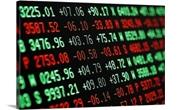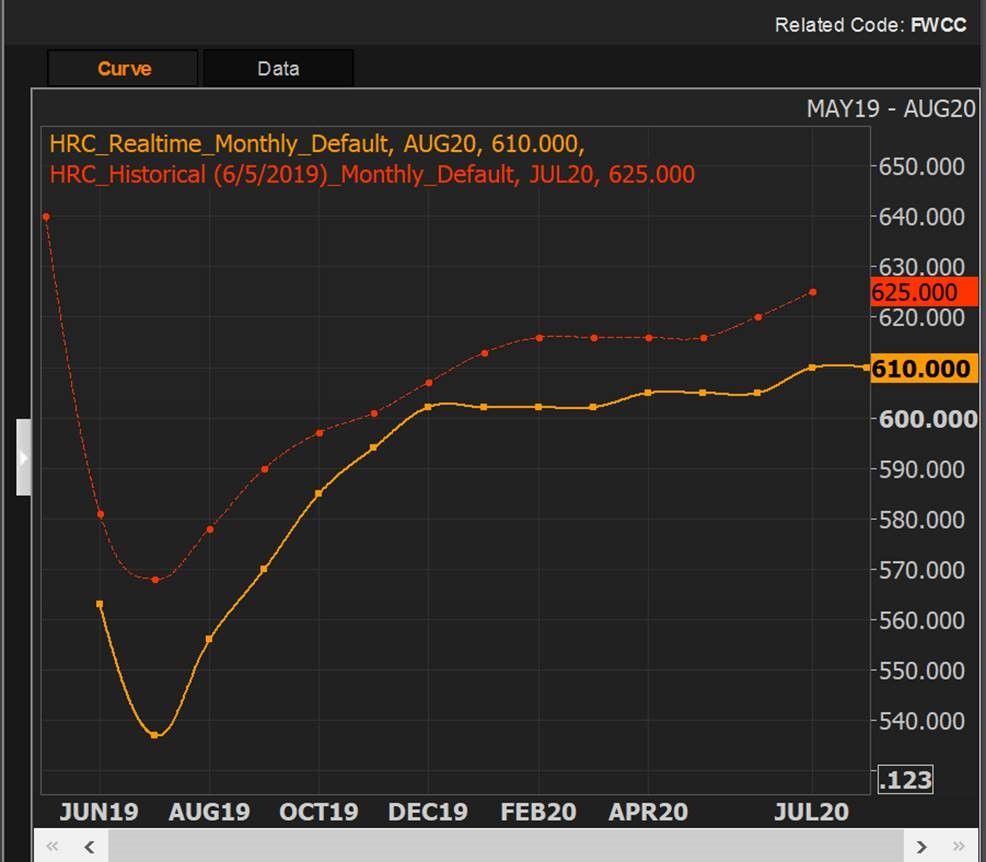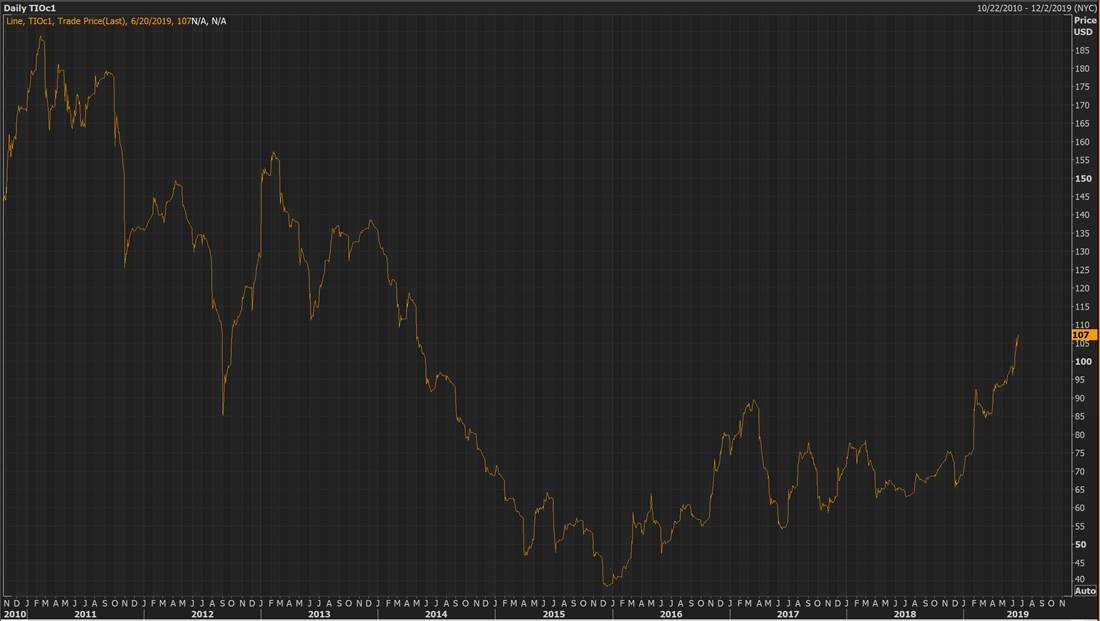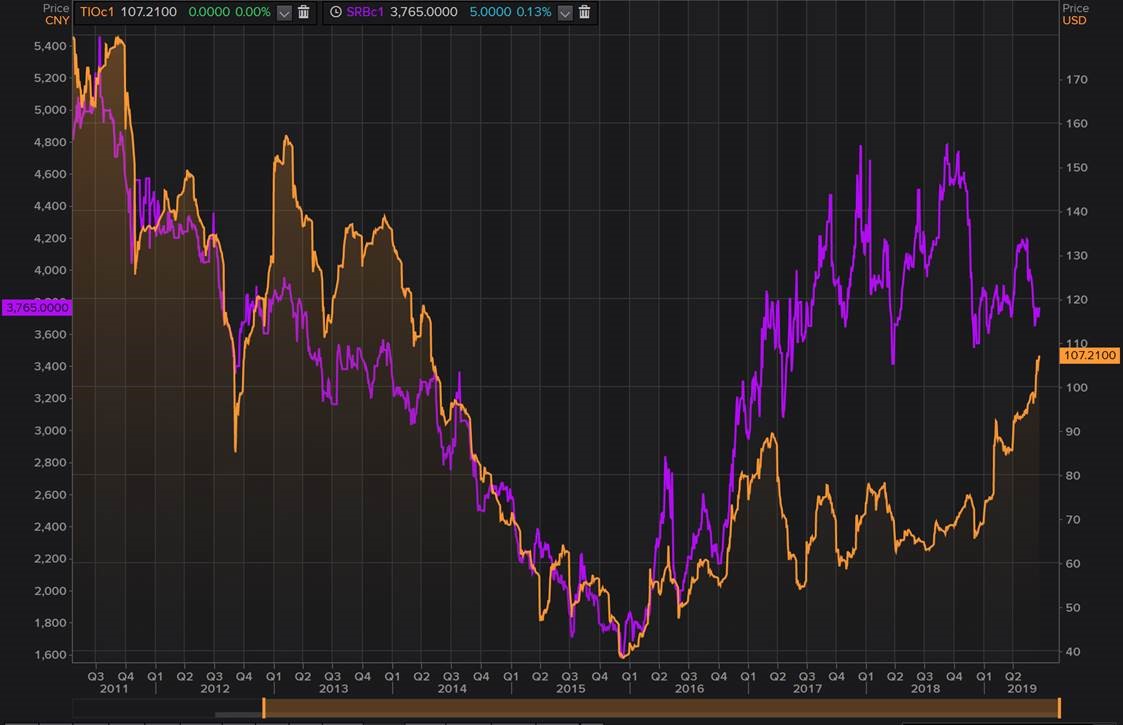Futures

Hot Rolled Futures: Recovery on the Horizon?
Written by Gaurav Chhibbar
June 20, 2019
SMU contributor Gaurav Chhibbar is a partner at Metal Edge Partners, a firm engaged in Risk Management and Strategic Advisory. In this role, he and his firm design and execute risk management strategies for clients along with providing process and analytical support. In Gaurav’s previous role, he was a trader at Cargill spending time in Metal and Freight markets in Singapore before moving to the U.S. You can learn more about Metal Edge at www.metaledgepartners.com. Gaurav can be reached at gaurav@metaledgepartners.com for queries/comments/questions.
My last article was titled “Futures: A Tail of Hope.” It highlighted how the contango (a curve where the front months are cheaper than the periods further out) had gotten steep. Any such market commands a closer look for those looking at calendar spreads/hedging cheap spot buys. Yesterday the contango got steeper! Market participants had an interesting problem to solve. How to trade a sharp decline in the spot index? As the index fell sharply, reflecting physical spot market transactions, front month futures got sold down (chart below). The back half of the futures, however, were trading up day over day. There were announcements from U.S. Steel about reduction in capacity, as well as optimistic outlooks shared by a few speakers at the SSS Conf in NY. The combination of facts and opinions apparently influenced buyers to come out of hiding and bid up levels Sep’19 onwards.
The red line is the curve from 6/5 versus the curve at close today (orange).

The chart above shows a steeper contango today than two weeks ago, highlighting that the market participants anticipate a rise in prices from July onwards. The pricing view in this case is likely influenced by a combination of factors: 1) expectation of reduced supply; 2) improvement in apparent demand driven by restocking; 3) and relative value of U.S. steel prices versus global pricing. Iron ore prices (chart below) have remained resilient and are trading at highs last seen in 2014. I recollect the 2014 period being a phase in the market that baffled those of us trading/originating Asian steel. The extent to which the Chinese mills were willing to drop steel prices below even the lowest estimates of cost of production was baffling to many.

The orange line below is iron ore and the purple line is rebar futures first-month price on the Shanghai futures exchange. The mills in China in 2014 and 2015 continued to produce despite losing money. Another highlight of this period was the onslaught of Chinese exports of steel around the world. However, Chinese steel mills can no longer access many of the large steel importing markets due to safeguards/duties. There is also increased focus in China on ensuring stricter pollution controls. These factors make this cycle intriguing and push the focus towards trying to assess: 1) how the mills will endure the current margin squeeze; 2) what sectors are consuming the current high levels of steel production in China; 3) and how much longer in the iron ore cycle before we see a supply response domestically?
To some players here in the U.S., China may seem too remote a market to influence their negotiations with American steel mills. However, one has to look at the broader picture to assess trends. For example, one must question how a strong ore market may cause slab markets to move to higher price levels and thereby influence HRC prices? Or, how can expensive ore provide strong support for pig iron and therefore relatively increase price competitiveness for scrap, which may get bid higher? These are important questions that may benefit you as you plan/trade your futures positions.

Here’s a question we have received over the past week that I think will help many of you plan your strategy: How do I make use of the futures to support long-term fixed price deals? I’ll tell you all the same thing we tell our customers—start with ensuring that you understand the risk between HRC futures versus the way you have your supply contract structured. For example, using a scrap/HRC based contract to hedge a CRC fixed price deal will introduce some risks that you should measure and understand. Looking at historical spreads between difference commodity contracts helps give some idea of how volatile these spreads have been and helps estimate the buffer you may want to price in.
Disclaimer: The information in this write-up does not constitute “investment service,” “investment advice” or “financial product advice” as defined by laws and/or regulations in any jurisdiction. Neither does it constitute nor should be considered as any form of financial opinion or recommendation. The views expressed in the above article by Metal Edge Partners are subject to change based on market and other conditions. The information given above must be independently verified and Metal Edge Partners does not assume responsibility for the accuracy of the information
Gaurav Chhibbar
Read more from Gaurav ChhibbarLatest in Futures

HR Futures: Summertime blues
Coming out of the holiday market and long weekend, it seems the HRC futures market has caught some post-vacation blues.

HR Futures: Financial players bullish on price, physical market participants not
We can interpret that managed money still has expectations of price strength while physical participants are running closer to a balance on a net basis.

HR Futures: Oil, Mideast tensions fail to move steel
After a hot start to June, the CME ferrous derivatives complex has cooled down.

HRC Futures: Could oil, ag price spikes drive steel higher too?
Could we see an abrupt shift now that oil prices have spiked higher? Will we see a rebound in the rig count? Will this create a snap-loading effect (think waterski rope), where the industry suddenly does a 180-degree turn? If so, will that bring with it increased demand for steel products used by the energy industry?

Flack: HR futures still on a wild ride
Never a dull moment in today's HR futures market.
